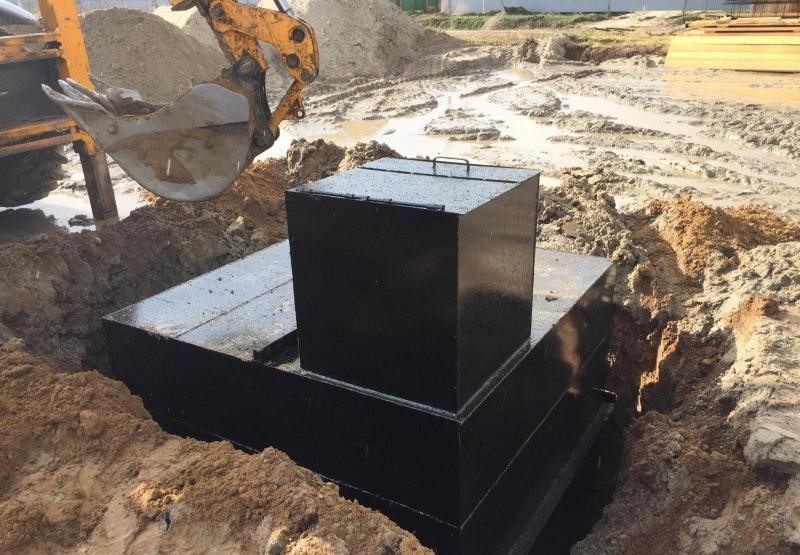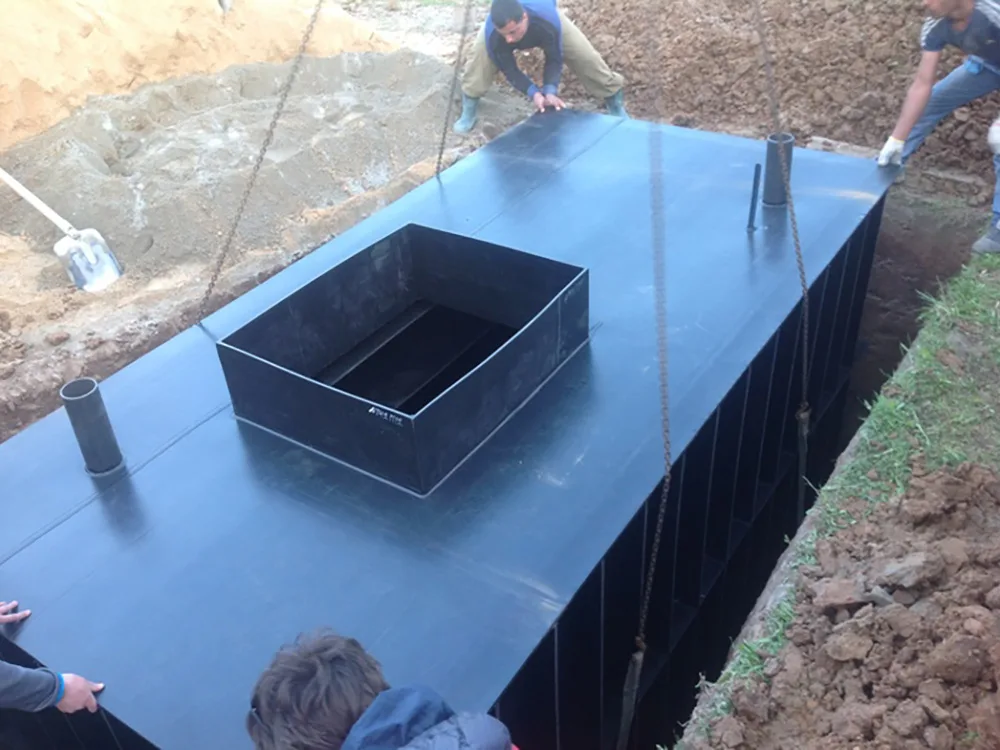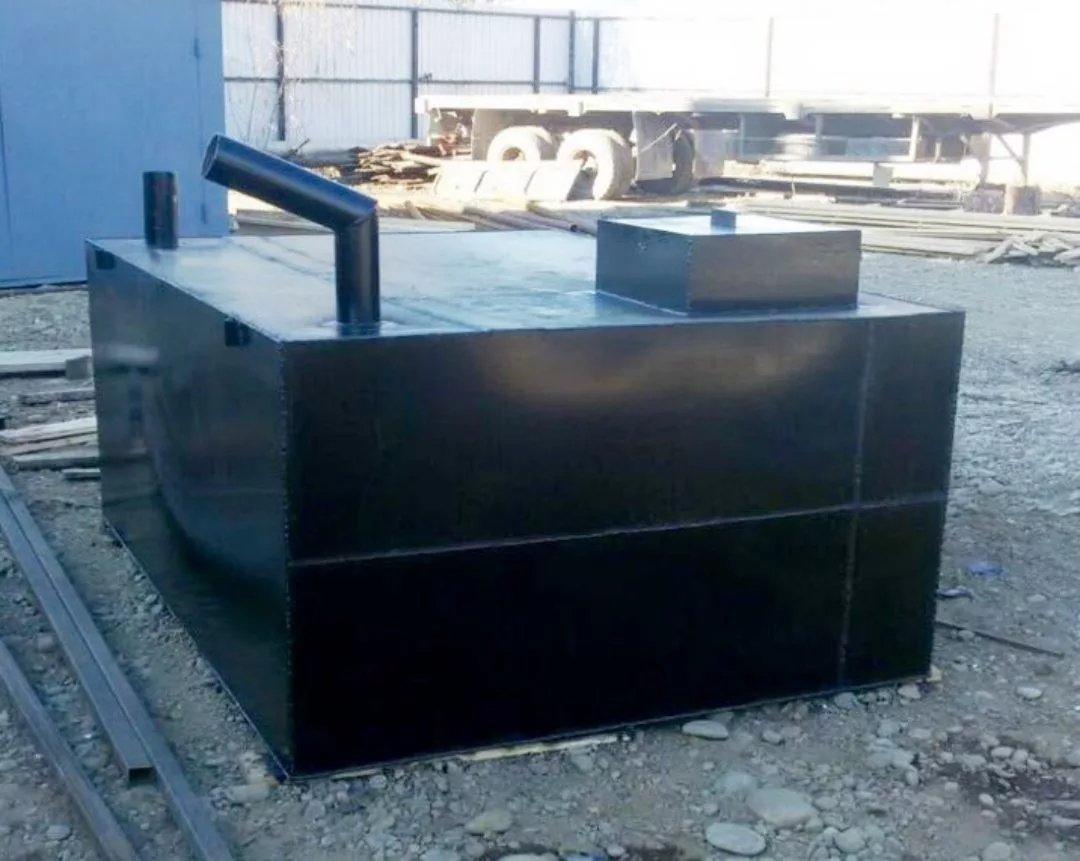To begin with, let’s understand the specifications of autonomous sewerage, which are forced today to choose private homeowners who want to enjoy comfortable living in their country mansions. These systems are characterized by reliability, smooth operation and durability, providing treatment and utilization of waste water. Create such engineering communications can be created independently, from various materials, as well as purchased ready-made and installed. But before this it is necessary to make the necessary calculations, so as not to be mistaken in the overall dimensions and required volumes. One of the options for the arrangement of such communications is a metal septic tank, which has a number of advantages in comparison with homemade concrete and brick treatment facilities.
Options for arrangement
Today, many dacha and cottage settlements are very remote from the main sewage pipelines. Consequently, the residents of such settlements do not have the opportunity to connect to such a pipeline, as it is quite expensive. It is much cheaper to buy ready-made septic products or build treatment facilities yourself from improvised materials. Some people choose the latter option in order to save money and reduce costs. They believe that such a solution will cost less than ready-made factory septic tanks. But this is a misconception, leading to even more expenses than buying ready-made solutions. If a dachnik or cottage owner builds a homemade local-treatment structure on his own plot, he will have to buy all the necessary equipment. It will also have to buy the necessary materials and take care of the tightness of the brick or cement tank, and this costs separate money. Equip such buildings will have to:
- drainage pump;
- fecal pump;
- ventilation system;
- chambers;
- compressors;
- filters;
- inspection hatch;
- erlift.
Each of the listed devices will have to be bought separately, spending a lot of money. If the above devices will not be purchased and installed, the effective operation of the local sewerage network, as well as effective sewage treatment can be forgotten. Insufficiently equipped makeshift system will have to pump out regularly, for which it will be necessary to call asseenizators with their special equipment. And this is a considerable expense, which is comparable to the cost of factory modifications of septic equipment. In some cases, they may be even more.
Materials of manufacture (assembly/construction)
Modern local-treatment systems in addition to ready-made solutions can be created from various building materials and products. Homemade stations are constructed from the following building materials:
- bricks;
- concrete;
- sand-cement mortar;
- steel tanks;
- plastic.
Each of the above options has its pros and cons. If you choose a metal septic tank to create a homemade engineering communication, you will get a strong, airtight container of great weight, which is not threatened by surfacing or pushing out to the earth’s surface under the influence of frost heaving and rising groundwater. But steel products have a big disadvantage – they are subject to corrosion, which leads to the rapid spread of rust, the formation of holes and seepage of sewage into the ground with all the consequences. To prevent this from happening, you will have to look for a tank made of stainless steel, aluminum or copper, and they will cost quite expensive.

Concrete septic tanks have corrosion resistance, are not affected by alkalis or chemical reagents contained in the earth, withstand the effects of ultraviolet light and low temperatures. But these structures will have to be carefully sealed to prevent the seepage of contaminated liquid into the soil. In this case, the procedure will need to be repeated often, as feces and chemicals contained in detergents quickly corrode sealants from the inside. And this is a costly affair. The same applies to structures made of cushioned tires, which for reasons of economy today choose many homeowners. Do not forget the fact that it is rubber, exposed to various aggressive factors.
Factory septic tanks
Manufacturers of sewage equipment offer the interested consumer a large selection of ready-made localized treatment plants that have a number of advantages. They are made of the following materials:
- polypropylene foam;
- fiberglass;
- metal.
Septic metal differs from homemade a number of features, among which it is necessary to highlight the presence of anti-corrosion treatment, which prevents the formation and spread of rust – the worst enemy of steel products. Consequently, if you decide to install a metal septic tank, it is better to choose a factory model and refuse homemade options. These are reliable, airtight containers of different volumes, complete with the necessary devices to accelerate and improve the efficiency of cleaning the contaminated liquid. Metal has a large weight and does not require additional fixation in the installation pit, withstanding huge mechanical loads, without deforming and forming holes. Due to their weight, such tanks do not float under the influence of groundwater and are not pushed out by moving soils.
Plastic tanks
In the production of factory samples of deep bio purification stations, different polymers with specific characteristics are used today. First of all, it is worth highlighting foamed polypropylene, produced by a special technology. Thanks to it, the material is highly durable, long-lasting and resistant under the influence of various factors of natural or other origin. Polypropylene housing is not subject to deformation under the influence of mechanical loads, does not give cracks and holes. Especially worth noting is the tightness of polypropylene foam tanks, which is maintained throughout the entire operational period. Consequently, the service life of such septic tanks exceeds half a century and can be extended in the case of competent installation and use. Fiberglass analogs have the same properties, representing an excellent alternative to other options.
What technical features has a metal septic tank?
Metal today is one of the most common materials in the production of various goods, including sewage equipment. This is due to the unique properties of steel alloys, among which it is necessary to emphasize:
- mechanical resistance;
- durability;
- not susceptible to the effects of heat / frost;
- affordable cost.
These products after anti-corrosion treatment will last for decades, without causing problems to the owners. They are single-chamber, two-chamber or multi-chamber. In each of the chambers, filtration of contaminated liquid is performed until they are almost completely cleaned of harmful impurities, chemicals and large particles. In steel alloy local treatment plants there is a multi-stage treatment of wastewater, reaching a 98 percent recovery rate. This process is also known as deep bioprocessing, which is now considered to be the most efficient.

Depending on the equipment, the efficiency of steel models also varies. If the manufacturer has installed pumping units and compressors in the model, it will perform filtration better and faster. Accumulative septic tank metal will cost relatively cheaper, but will require additional costs for the purchase and installation of the above devices. Consequently, in order not to pay twice, it is better to initially purchase a high-performance modification of the steel local-cleaning device, equipped with all the necessary equipment.
Principle of operation
Septic metal on the principle of operation does not differ from its plastic, concrete or brick analogs. Sewage treatment in steel tanks occurs in stages, with the participation of useful microorganisms living and multiplying in a separate chamber called an aerotank. First of all, the sewage from sanitary appliances enters the receiving chamber, there it is clarified and freed from large particles settling at the bottom. Then, through overflow connections, they flow into the next chamber, where aerobic bacteria live, significantly increasing the efficiency of cleaning. Thanks to them, the level of filtration in such stations reaches 98 percent. They release special enzymes that trigger oxidation processes, causing fermentation of fecal masses with their subsequent breakdown. After a certain period of time, this biomass turns into sludge deposits accumulating at the bottom of the tank.

Periodically, it is necessary to remove excessive amounts of sludge to prevent the tank from siltation and further spilling into the soil. For such a task an erlift, or as it is also called a mammut pump, is used, which automatically pumps the sludge to the top. It can be used as a fertilizer without worrying about polluting the environment. All harmful impurities and components are utilized as a result of aerobic microorganisms. But aerobes for can not live and multiply in an oxygen-free environment. Therefore, metal septic tanks are equipped with compressors, artificially injecting air, which is vital for these organisms.
Maintenance
Factory steel septic tanks do not require special care or maintenance. It is enough to monitor these systems regularly and clean individual elements from various contaminants. It is also periodically necessary to pump out the excess biomass remaining on the bottom surface after the filtration of human waste. If the owner will not use the autonomous communication in the winter, it is necessary to perform its conservation, so that frosts do not disable the components. With the onset of the warm season, re-install all the elements removed during conservation.
